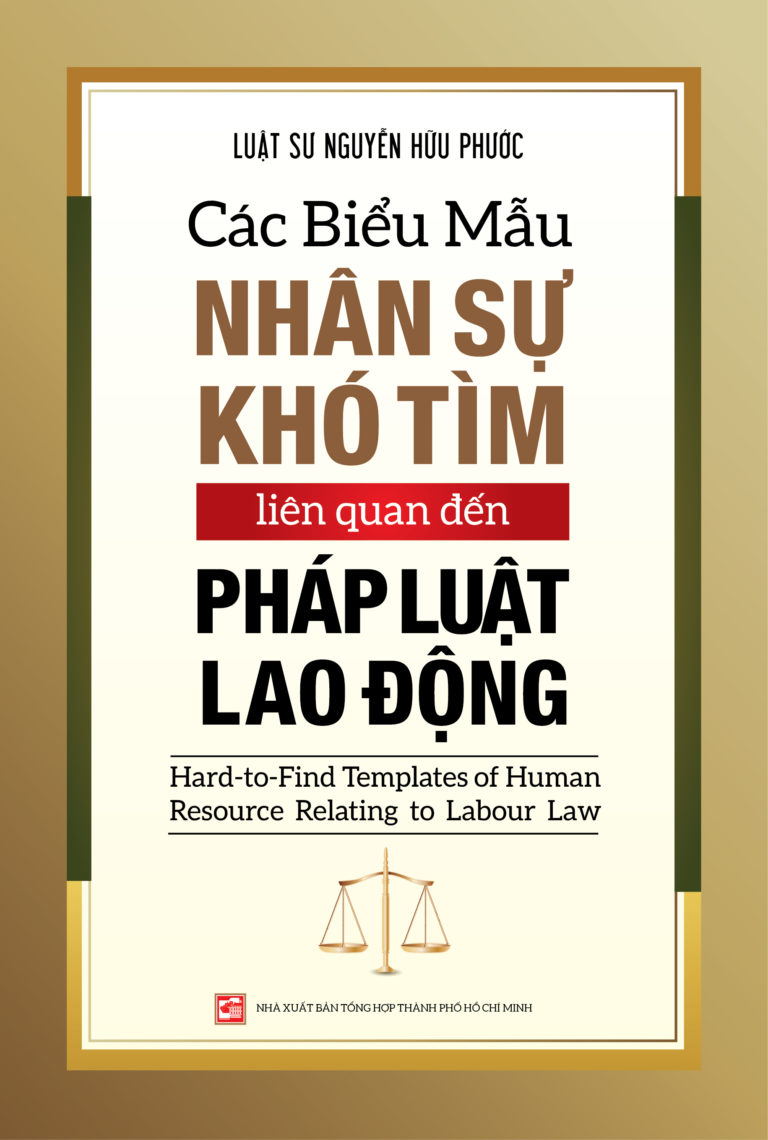What is case law? How many types of case law are there?
Case law is an essential component of the legal system in common law countries. It exists alongside statutory laws and plays a crucial role in resolving disputes in courts. On the other hand, in civil law systems, case law is not the primary binding source of law. Instead, it serves as a reference to supplement statutory laws. However, in recent years, the application of case law has evolved in civil law countries, including Vietnam. Judges are gradually recognising the importance of case law and are using it as a source for their rulings. In this article, we will discuss different types of case law and their practical applications in legal proceedings. By the end, you will have a better understanding of how case law operates in both common law and civil law systems.
What is case law?
Pursuant to Article 1 of Resolution 04/2019/NQ-HDTP, “case law” is defined as the arguments and rulings in a court judgment or decision that has legal effect, chosen by the Council of Judges of the Supreme People’s Court concerning a specific case, and announced by the Chief Judge of the Supreme People’s Court as a case law for other courts to study and apply in their court proceedings.
The foundation of case law lies in the limitations of the legal system. In civil law countries, courts often face challenges when applying statutory laws in cases where the laws lack provisions or where existing provisions are ambiguous. In such instances, the courts take on the role of interpreting the law to fill in these gaps. Typically, only judgments and decisions made by the Supreme Court to resolve legal issues are selected and publicly announced to serve as case law for other courts to handle similar cases, ensuring consistent application of the law nationwide. Case law in these countries is not an official mandatory source of law but instead functions as a reference to complement legal texts. Therefore, the crux of creating case law in these countries is the courts’ activity of interpreting the law rather than creating laws themselves.
In many foreign countries, the concept of case law, also known as precedents, is one of the official and significant sources of law within the legal system. It is widely applied in the process of resolving disputes in court. In this system, the judgments and decisions made in cases published in legal case reports become case law, serving as templates upon which the court bases its rulings in similar cases with similar circumstances and issues later. The goal of creating case law is to ensure consistency in legal decisions and to establish a precedent that can be followed in future cases. This approach allows legal systems to evolve and adapt to changing circumstances while still maintaining a consistent and reliable framework for resolving disputes.
It can be argued that the essence of the court’s activity in creating case law, whether generating case law as solutions in common law countries or providing interpretations in civil law countries, is fundamentally a creative legal endeavour undertaken by the court. In these cases, the court devises new legal solutions to address current issues and applies them to similar cases in the future. This process requires judges to use their legal expertise, knowledge, and experience to analyse the facts of a case, identify relevant legal principles, and craft a ruling that provides a clear and logical legal solution. By creating case law, courts play a vital role in shaping and evolving legal systems, helping to ensure that the law remains relevant and effective in the face of changing circumstances.
How many types of case law are there?
In general, case law is classified based on the legal relationships it regulates. This includes civil case law, commercial and business case law, criminal case law, and so on. Each type of case law applies to a specific area of law and serves as a reference point for courts when adjudicating cases in that area. For example, civil case law may deal with issues such as contract disputes, property rights, or family law matters, while criminal case law may focus on issues such as criminal procedure, sentencing guidelines, or evidentiary standards. By classifying case law in this way, legal systems can provide guidance to judges and ensure that legal decisions are consistent and fair across different areas of law.
On the other hand, in terms of legal essence, case law can be classified into three different types: Mandatory case law, Explanatory case law, and Original case law. According to Black’s Law Dictionary:
- Mandatory case law is case laws that the court must adhere to; for instance, a lower court is bound by the case law set by a higher court in a similar case.
- Explanatory case law is case laws that can only be applied to an existing legal provision.
- Original case law is case laws that establish and apply a new legal rule. A persuasive case law is one that a court may either follow or reject, but its terms must be respected and carefully considered.
Therefore, the flexibility in applying case laws varies, allowing the law to be interpreted in a flexible manner, without being rigid. In Vietnam, case laws were previously applied to resolve civil cases when there were no legal texts or other regulated sources. However, after the issuance of Resolution 04/2019/NQ-HDTP, Judges and the Judicial Council must apply precedents in cases where there is a precedent related to the ongoing case. If not applied, the reasons must be clearly stated in the judgment or decision regarding the case.
How is case law issued and applied?
Issuance and announcement of case law:
The process of issuing and announcing a case law includes the following stages:
- Proposal of the judgement and decision to be developed it into a case law;
- Collecting opinions on the proposed judgement and decision of the Supreme People’s Court;
- Collecting opinions from the Advisory Council on Case laws;
- The Chief Judge of the Supreme People’s Court organises a plenary meeting of the Council of Judges of the Supreme People’s Court to discuss, deliberate, and pass the case law; and
- Announcing the case law.
When announcing a case law, the following aspects need to be included: the number and title of the case law, the decision of the court that forms the basis for the case law, the legal situation, legal solutions of the case law, the circumstances of the case, and the court’s ruling relevant to the case law, and the content of the case law. After the announcement, the case law is studied and applied in trials after 30 days from the date of announcement.
Applying case law in trials
Firstly, the number of cases resolved through the application of case laws in Vietnam is still limited and insufficient to meet the practical requirements of the trial proceedings. This poses a significant challenge as many laws still have shortcomings, leading to a lack of legal basis for resolution. Due to the recent introduction of case law regime, many courts have not focused enough on evaluating and carefully considering judgments and decisions with legal validity. This lack of attention results in delays in reporting for reviewing and identifying appropriate judgments and decisions to propose for development into case laws.
Secondly, the methods of citing case laws in court judgments and decisions have not been standardised. Most judges usually cite case laws in the assessment section of the judgment or decision. However, there are cases where judges choose to refer to case laws in the ruling section of the judgment. Additionally, many judges follow the approach of case laws in their rulings but do not cite them in the judgment or decision they issue.
Thirdly, the implementation of Article 8 of Resolution No. 04/2019/NQ-HDTP has been challenging due to its unclear guidelines. Although Clause 2 of Article 8 requires Judges and Judicial Councils to apply legal precedents and treat cases with similar legal situations equally, the term “similar legal situations” has not been specifically defined, which makes it difficult for Judges to comprehend and apply it. As a result, Judges’ personal perspectives and subjective judgments significantly influence the determination of “similar legal situations,” leading to inconsistency in handling cases.
Finally, another challenge in the application of case laws is their relatively lower legal effect compared to other legal sources. Although case laws are applied when there are no provisions, customs, or similar laws that can be applied, it is still difficult to determine whether the application of similar laws is necessary, especially when a case has already been resolved through a case law, providing a clear legal solution. If courts continue to apply similar laws, the role and value of case laws will diminish, which poses a challenge to the practical application of case laws in trials.
Above is an overview of case law and types of case laws that Phuoc & Partners shares with readers. If you have any difficulties related to the legal field, please contact us. Phuoc & Partners is a professional consulting firm established in Vietnam and currently has nearly 100 members working in three offices in Ho Chi Minh City, Hanoi and Danang. Phuoc & Partners is also rated as one of the leading consulting firms specializing in business law in Vietnam that has leading practice areas in the legal market such as Labour and Employment, Taxation, Merger and acquisition, Litigation. We are confident in providing customers with optimal and effective service.










